PEACHFRONT SPEAKS
The Online Mineral Museum IS BACK!!!.
The Amazing Bolivian Parrot and Rare Macaw EscapadeEagle Overload: More Eagles, More Cats, the South Africa Edition
MY KENYA DIARY: IN QUEST OF EAGLES
MADAGASCAR DIARY: SERPENT-EAGLES, GOSHAWKS, AND MORE
A Very Partial Index to the Entries
A for the time being not even remotely complete guide to all 4,300+ plus entries
BIRDS***BIRDING***WILDLIFE GARDENING
SF/BOOKWORM***NUCLEAR/SPACE
A Google-Plus Verified Author
|
2004-02-10 - 8:28 a.m. This is Part Three of my Kenya diary based on my January Raptours trip headed by Bill Clark, author of A Field Guide to the Raptors of Europe, the Middle East, and North Africa as well as several other leading guides. Part One can be found right here. Part Two can be found right here. And here's the bird list and also an animal list -- both complete with photographs.
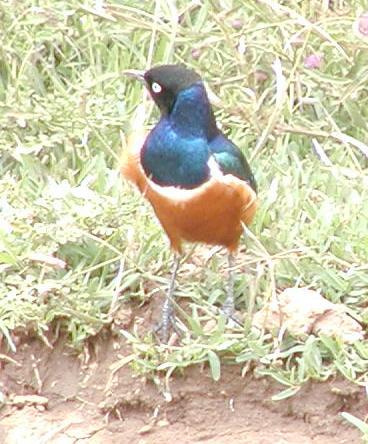 � 2004 by Elaine Radford, all rights reserved Jan. 17, 2004 A longish drive to our next hotel provided us with plenty of roadside birding opportunities, including two new raptor species, Greater or Black Sparrowhawk and African Goshawk. And, while the Sparrowhawk might fall in the "better view desired" category, the African Goshawk posed right by the road, as pretty as you please, allowing nice long looks before he finally flew. Our hotel, the Naro Moru River Lodge, was beautifully landscaped with a variety of colorful flowers. We soon noticed a female Paradise Flycatcher building a tiny round nest on a branch over the river. Other notable birds of the day included a near tornado of Little Swifts, a displaying male Long-Tailed Widowbird, an odd-looking Dideric Cuckoo, and a very wet Meyer's or Brown Parrot. A funny incident occurred when we encountered our first Northern Anteater Chat. F. wanted us to see it fly, so that we could observe the white wing flash, but the bird refused to be flushed by our van. So F. asked a child passing on a bicycle to flush the bird, which then unhurriedly flew a few yards -- enough to show us the characteristic flash. I just know that kid went home and told his parents that people had come all the way from America who had never seen a bird fly before.
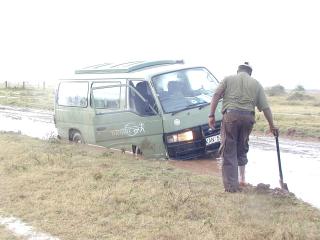 � 2004 by Elaine Radford, all rights reserved I'm not sure what to make of Kenya's dry season. A sudden thunderstorm flooded the road we'd taken in search of Lesser Kestrels, and soon our van was stuck up to the axle, completely unmoveable. The cell phone, like cell phones everywhere in rural emergencies, didn't get through. As we waited and wondered what to do, the wet Meyer's Parrots came screeching by for a quick visit. Such road emergencies are apparently not too uncommon in wet weather in Kenya, and eventually a tractor happened along, which agreed to pull us out of the mud and escort us back to the hotel. Well, maybe. Two flat tires later, the tractor threw in the towel and admitted the job was too big. By this time, a large crowd of young men had gathered, and they began the slow job of extricating the van by rocking it back and forth. D. jumped in to help, even though the young men were in their teens or early twenties and perhaps didn't urgently require his assistance, but they managed to (mostly) conceal their amusement at a situation they obviously found highly entertaining. At some point, F. did get through on the cell and arranged for a four wheel drive Land Rover to rescue us. Whew. Our rescuer was another birding expert like F. and as we made our way through the flooded darkness he suddenly sang out, "Crowned Plover!" to the perhaps only marginally hysterical laughter of us all. I have to observe that, if we'd been stranded at twilight in Louisiana, we'd have been eaten alive by mosquitoes. Despite the mosquito nets provided on every bed, we've seen hardly a mosquito worthy of the name. Not that I'm complaining or anything. Jan. 18, 2004 As we left the River Lodge area, we caught tantalizing glimpses of Mount Kenya through the clouds. Then, right beside the road, we came across a small flock of 5 Lesser Kestrels, hoping to make us feel foolish for getting stranded on a back road in search of them. Higher in the mountains, we stopped at a sign promising Mackinder's Eagle-Owl, a subspecies of the Cape Eagle-Owl. When we hopped out of the van to scan the cliffs, a young lady emerged from the countryside and guided us to the area where the owl had been seen most recently. In short order, we had a very drowsy-looking owl all fat and sassy in the scope.
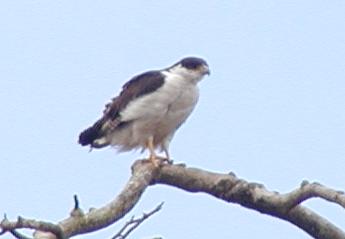 � 2004 by Elaine Radford, all rights reserved
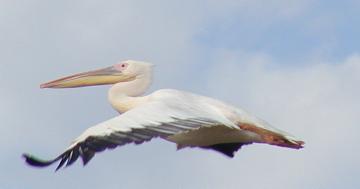 � 2004 by Elaine Radford, all rights reserved
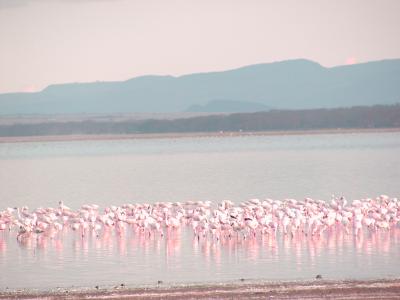 � 2004 by Elaine Radford, all rights reserved The density of eagles was astounding. Apparently, a lot of raptors like to wait around for somebody else to do the actual killing of the oh-so-abundant Lesser Flamingoes or other avian treats, and then they dash in for a steal. Most of the dozens of eagles seemed to be idling, but we didn't have to look long before we observed -- yes -- a Marabou Stork stealing food from a disgruntled Fish Eagle. Some trees had so many eagles it was like they were Christmas ornaments. And there was lots of variety; my notes list Fish Eagle, Steppe Eagle, Lesser and Greater Spotted, Long-Crested, Tawny, and the ever-impressive Martial.
 � 2004 by Elaine Radford, all rights reserved Jan. 19, 2004 A boat tour of Lake Naivasha yielded our new raptor of the day, the Osprey. Yes, the same Osprey species that is seen all over the world. It isn't really a hawk-watching trip until you've got one on the list. But I think we were all most impressed by the huge numbers of Fish Eagle pairs. We added more new species to the list than I feel like typing, but some stand-outs include Pink-Backed Pelican, Squacco Heron, Purple Heron, and Black-tailed Godwit.
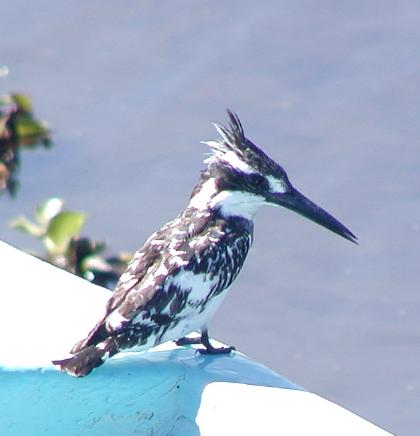 � 2004 by Elaine Radford, all rights reserved
 � 2004 by Elaine Radford, all rights reserved A church group stopped to see what we were looking at as we scoped the Verreaux's Eagle. A few women were interested in the eagle and timidly peeped in the scope, but I think most of the people in the group thought we were mad as hatters. If they saw another van stopped, they expected to encounter rampaging lions or something. Jan. 20, 2004 Will wonders never cease. When we arose this morning, we found our stuff being loaded into a Land Rover. The road conditions ahead were rumored to be execrable -- we would later discover that "rocky goat path" would be a more accurate description than "road" in many areas -- so we could no longer limp along without a four wheel drive no matter how talented our driver.
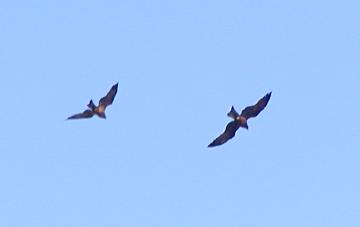 � 2004 by Elaine Radford, all rights reserved Black Kites were everywhere. As I strolled onto the grounds, I could hear two of them dueting in their peculiar voices from a large tree. Then the pair flew up from the tree, and I could see one of them holding a twig. Then the bird dropped the twig, and the two kites performed a brief courting flight, locking claws for a few seconds. It was only the first of many such displays that we'd see from the roof, where pairs of Black Kites courted endlessly, and sometimes a third wheel would try to interrupt the action.
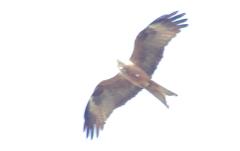 � 2004 by Elaine Radford, all rights reserved I had heard that Black Kites liked sandwiches but I soon learned that they were very unlike gulls in their approach to human food offers. D. succeeded in getting all of one Black Kite to snatch one bite of food out of the air. F. explained that they prefer to steal the food when no one is looking. I put some sandwich meat on the ledge and, when Bill had his back turned, a bold kite dived down and grabbed it. But I couldn't get the birds to take anything when we were looking directly at them.
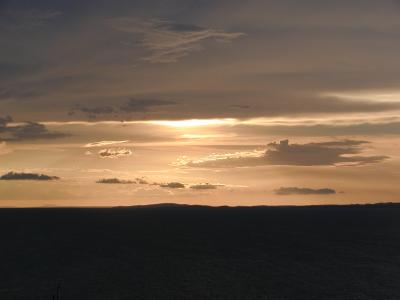 � 2004 by Elaine Radford, all rights reserved
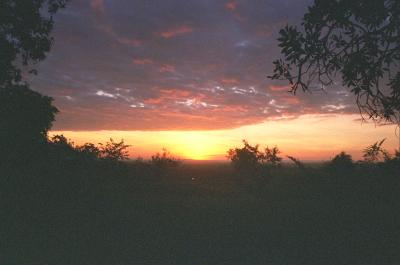 � 2004 by DD, all rights reserved

All Rights Reserved, Copyright 2002-2017 by Elaine Radford
|